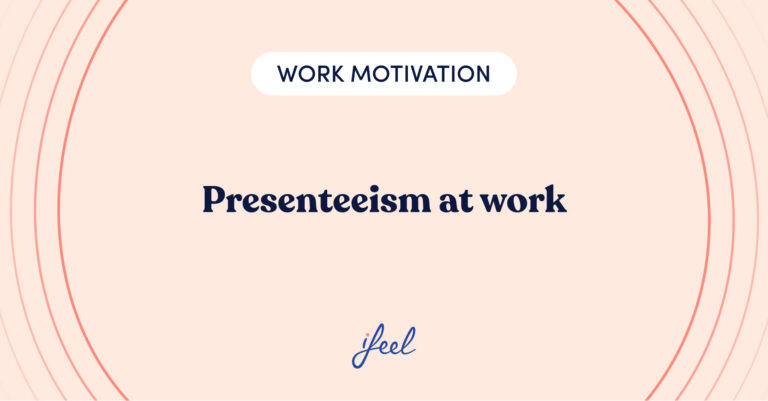You may have already tried out the nonlinear workday without realizing it, or it may even be your current model of schedule distribution at work. This concept is relatively unknown to many, although it is simple to learn. In fact, during the early months of the pandemic, it became a custom, in some cases forced, to adapt the work of many employees to the circumstances of lockdown. We discuss more on this topic in this article.
What exactly is a nonlinear workday?
Although it might sound perplexing, the nonlinear workday, put simply, consists of working the stipulated daily work hours with a different distribution than usual. Instead of completing all the hours in one go (taking rest breaks into account), the hours are distributed throughout the day in a discontinuous manner to maximize work flexibility at the employee’s convenience.

One might assume that the only possible outcome of implementing this type of work schedule would be a change in the structure of the employee’s schedule and nothing more, certainly no changes in employee performance.
We all know – and if we do not, it’s good that we find out now – that the labor model under which most of us operate today is nothing new. The length of our typical workday, as well as other characteristics of our professional life, were established decades ago as a result of advances in legislation concerning employee rights and duties. Are you familiar with the forty-hour week, the eight-hour workday, and what we call “weekends”? Such issues took their current form way back then.
A workday that is adapted specifically for the employee
The nonlinear workday implies planning a new schedule that is agreed upon by the company and the employee. It is a matter of adjusting the work schedule to the natural productive rhythm of the employees rather than adapting the natural productive rhythm of the employees to the work schedule.
Indeed, we do not always have the same level of access to our peak talent and creativity during the hours that make up our workday. Bearing this in mind, why not work a nonlinear workday that effectively synchronizes our work hours with our physical and psychological availability to deliver our best results?
Factors that influence the nonlinear workday
Let’s not deceive ourselves – perfection does not exist in any area of life, and most certainly not in the professional sphere. However, what does exist is the ability to change for the better and innovate work characteristics so that company and employee situations improve.
It is not always easy for professionals to decide which is the best method to improve employee productivity or quality of life or how best to combine the two.
Covering Employee Specificity
Some of the changes that were alluded to in this article, such as implementing the nonlinear workday in a regulated manner rather than through the back door, involve particular challenges.
In this case, one of the questions to be resolved is the following: to what extent can companies afford to customize working conditions to meet the vast human diversity within the workforce?
The preferences, needs, and characteristics of all the workforce members can be numerous and diverse, so attending to them while maintaining – and improving – employee productivity requires highly personalized professional advice.
Team coordination challenges
At first glance, it seems difficult to resist the charms of the nonlinear workday format. However, is this model only useful for workers who do not depend on their colleagues and who can work on their own? Is it also viable for teams where assembly line work, including rapid communication and simultaneity or synchrony with colleagues, are essential?

The company we want to be
In addition, the conceptual challenge concerns how company managers approach corporate culture and how employees approach their professional roles.
From that point of view, where should the focus lie? Is it the number of hours worked or the results obtained within a certain period of time? Should a company’s objective be to increase or improve productivity? To what extent are the company and the employees willing to sacrifice their respective interests (economic growth, prestige, professional development, psychological well-being) within the employment relationship that binds them?
These questions point to an interesting issue for both parties: the nonlinear working day.
We hope that you found this article on the nonlinear workday interesting. If you would like more information about ifeel’s emotional well-being program for companies, get in touch, and we will contact your team as soon as possible.
Is a nonlinear workday shorter than a linear workday?
No, not by principle, since linearity affects the distribution of working hours throughout the day, not the number of hours worked.
Is it better to work a nonlinear workday?
It is neither better nor worse. The important thing is to evaluate in each case whether a linear or nonlinear distribution of hours is suitable for employee productivity and well-being.
How can nonlinear working hours benefit employees?
One of the most significant advantages of the nonlinear work schedule is that it facilitates the balance of work with other areas of an employee’s life or responsibilities. In addition, it allows employees to focus their efforts on the times of day when they are most productive. That way, employees do not have to deal with an evenly-distributed workday schedule that fails to consider their natural productivity levels.
Is the nonlinear workday good for business?
To the extent that a specific distribution of working hours improves employees’ quality of life without decreasing their productivity (or even increasing it), companies can benefit from a nonlinear working day in the short, medium, and long term.










